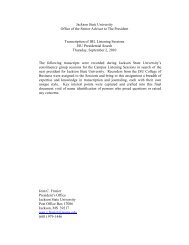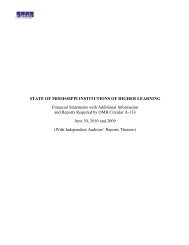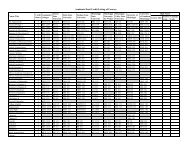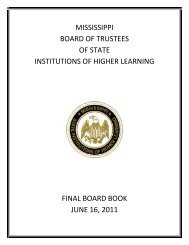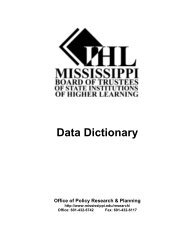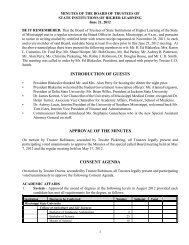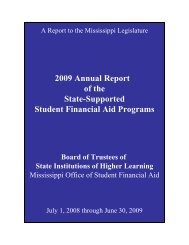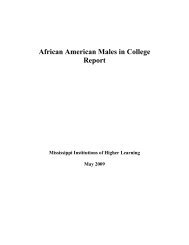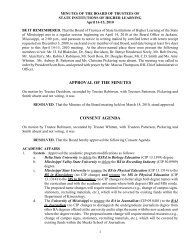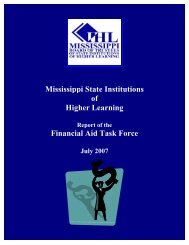Motor Vehicle And Fleet Management Best Practice Guidelines
Motor Vehicle And Fleet Management Best Practice Guidelines
Motor Vehicle And Fleet Management Best Practice Guidelines
You also want an ePaper? Increase the reach of your titles
YUMPU automatically turns print PDFs into web optimized ePapers that Google loves.
Specialty <strong>Vehicle</strong>s & LicensureEmergency <strong>Vehicle</strong>s: Describe training and equipment requirements for theoperation of emergency vehicles such as patrol cars, ambulances, and fire trucks,as applicable. Provide information regarding regulating authorities or others withauthority to enforce established standards. Describe any additional operator’slicense or permit requirements as well as specific inspection criterion, certificationor documentation procedures related to emergency vehicles.Special Apparatus/<strong>Vehicle</strong>: Describe training and equipment requirements for theoperation of specialty vehicles such as motorcycles, boom trucks, dump trucks, towtrucks, etc., as applicable. Provide information regarding regulating authorities orothers with authority to enforce established standards. Describe any additionaloperator’s license or permit requirements as well as specific inspection criterion,certification or documentation procedures related to specialty vehicles.Vans: Create a special section as necessary regarding various sizes of vans,especially 15-passenger vans. Note the hazards, safety precautions, driverqualifications and other university policies that may apply. See Appendix H.Mass Transit <strong>Vehicle</strong>s: Create a special section as necessary to addressrequirements of mass transit systems as prescribed by the Federal TransitAdministration, cooperating partners, and grant-related agreements.Commercial <strong>Vehicle</strong>: Describe training, recordkeeping, and equipmentrequirements for the operation of commercial motor vehicles as identified by theFederal <strong>Motor</strong> Carrier Safety Administration and the Federal Department ofTransportation. Provide information regarding regulating authorities or others withauthority to enforce established standards. Describe any additional operator’slicense requirements or specific inspection criterion, certification, or documentationprocedures.Class of License and Endorsements: Address the required licensure for variousuniversity-owned vehicles. Provide method of compliance with MS Code Title 63Article 1 and Article 2. Explain requirements for:1. Class R – Regular License. No person shall drive or operate a motorvehicle other than a motorcycle upon the highways of the State ofMississippi without first securing an operator's license to drive on thehighways of the state.A motorcycle endorsement may be issued to any person who holds avalid Mississippi driver's license and meets the other requirements forsuch endorsement contained in this chapter.A restricted motorcycle operator's license may be issued to anyapplicant who fulfills all the requirements necessary to obtain aMississippi operator's license that may be applicable to the operationof a motorcycle. Such license shall entitle the holder thereof tooperate a motorcycle, and no other motor vehicle, upon the highwaysof this state.2. Class A. Any combination of vehicles with a gross vehicle weight ratingof twenty-six thousand one (26,001) pounds or more, provided the grossvehicle weight rating of the vehicle or vehicles being towed is in excessof ten thousand (10,000) pounds;<strong>Motor</strong> <strong>Vehicle</strong> and <strong>Fleet</strong> <strong>Management</strong> <strong>Best</strong> <strong>Practice</strong> <strong>Guidelines</strong> 9



